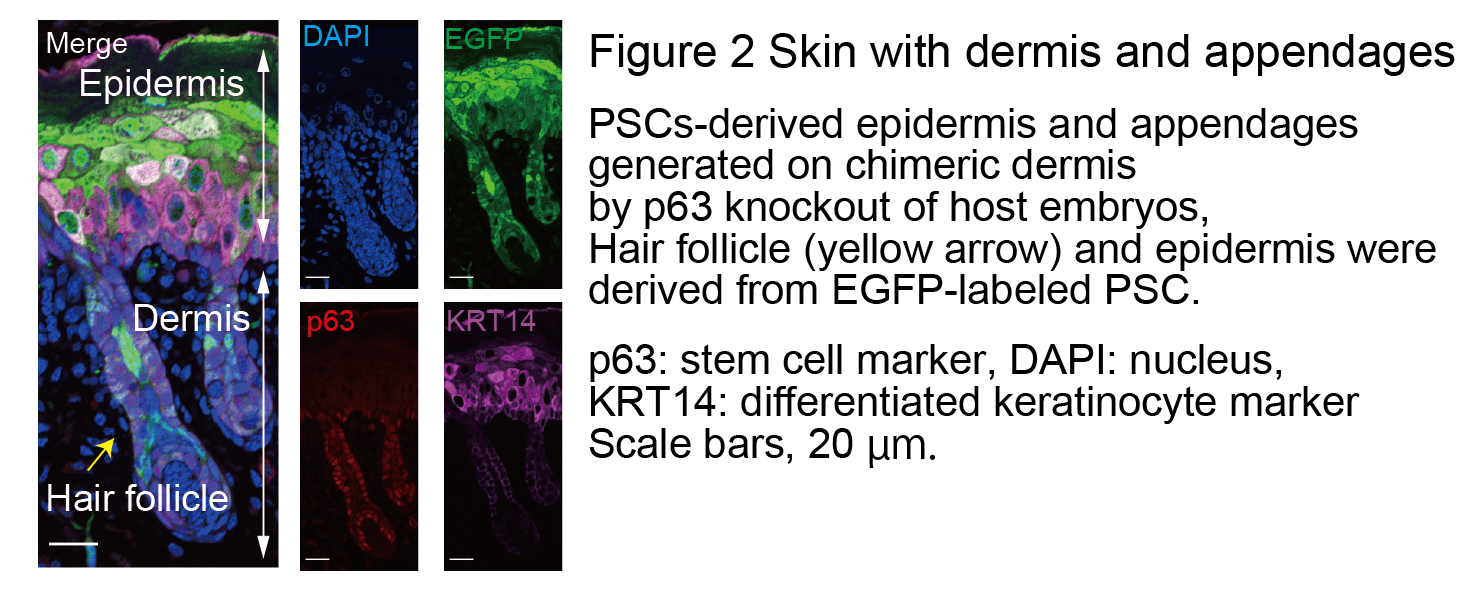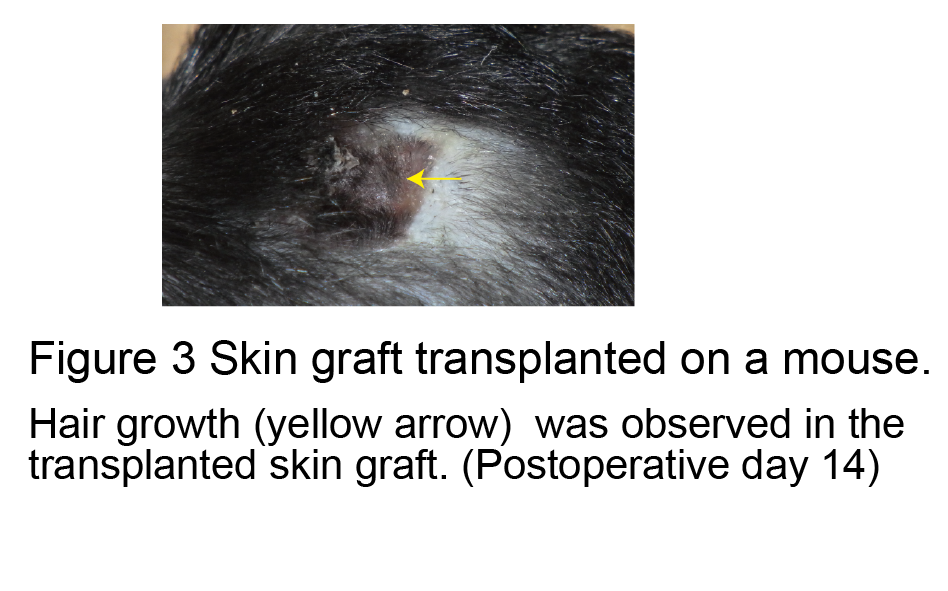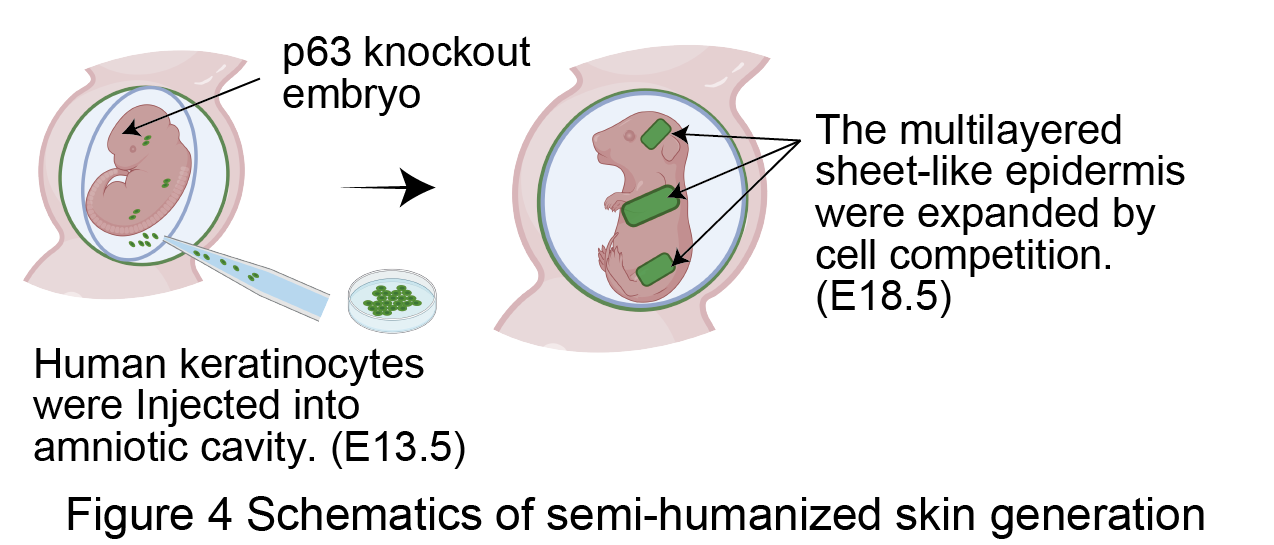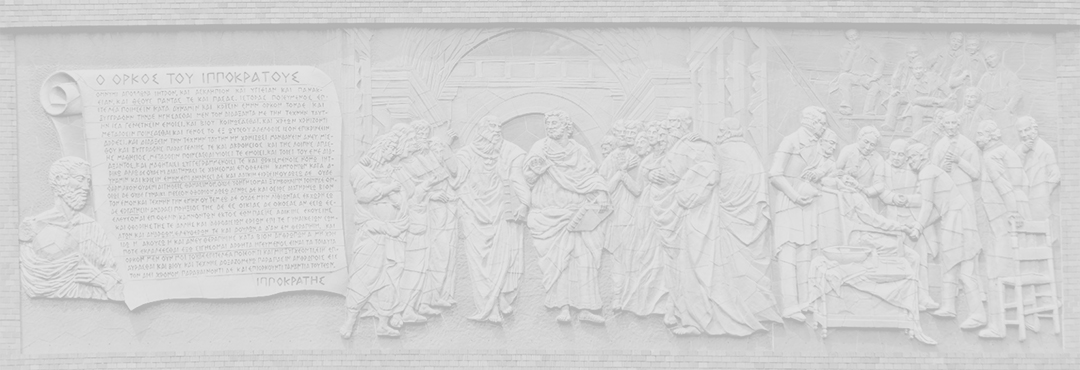Grow the skin you’re in: in vivo generation of chimeric skin grafts
In a study published last month in Nature Communications, researchers from Tokyo Medical and Dental University (TMDU) have revealed that growing donor skin in another species yields surprisingly robust and functional skin grafts.
The gold standard for treating burn wounds is autologous skin grafting, a process in which sheets of skin containing both the epidermis (the outer layer) and the dermis (the deeper layer) are transferred from other parts of the patient’s body to cover the wounded area. However, for large wounds it can be difficult to harvest enough skin from the limited donor sites. Split-thickness grafts that contain mostly epidermis with only some of dermis can be used to cover larger areas, but they do not include features like hair and sweat glands, and are more prone to shrinkage and scarring.
“As alternatives to autologous skin grafts, artificial skin substitutes including cultured epidermis and reconstituted skins have been developed,” says the lead author of the study Dr. Hisato Nagano. “These options are inferior, though, as cultured epidermis can only be used for shallow wounds, and the engraftment rate of reconstituted skins is low.”
To provide proof-of-concept for a new way to produce autologous skin grafts, the researchers generated skin grafts by introducing a mutation into mouse fetuses that made them unable to grow mature epidermis. These fetuses were then injected with mouse stem cells and allowed to develop normally until birth, when their skin growth was analyzed.
“The results were very surprising,” explains Dr. Naoaki Mizuno, the corresponding author. “Not only were the chimeric mice born covered with large patches of skin derived from the injected cells, but these patches also survived up to 3 months when grafted onto mature mice, and even grew fur.”
Intriguingly, injecting the same mutated mouse embryos with human skin cells yielded similar results: as the mice developed in utero, they grew sheets of human skin that mimicked the structure and organization of mature epidermis.
“Our findings suggest that semi-autologous skin grafts containing hair follicles and other skin appendages can be generated in vivo and engrafted successfully,” says Dr. Hiromitsu Nakauchi, senior author.
Given that mouse embryos can only grow small amounts of skin, the next step would be to scale up the process to larger animals with a longer gestation period to generate large human skin grafts. This approach, which involves generating only skin tissue, could help avoid ethical concerns about using human-animal chimeras to produce organs for medical use.





Summary
Journal Article
TITLE: Skin graft with dermis and appendages generated in vivo by cell competition
DOI: https://doi.org/10.1038/s41467-024-47527-7
Correspondence to
Hisato Nagano, (Adjunct) Lecturer
Stem Cell Therapy Laboratory,
TMDU Advanced Research Institute (TMDU-ARIS),
Tokyo Medical and Dental University(TMDU)
E-mail:h-nagano.sct(at)tmd.ac.jp
Naoaki Mizuno, Assistant Professor
Department of Experimental Animal Model for Human Disease,
Center for Experimental Animals,
Tokyo Medical and Dental University(TMDU)
E-mail:nmizuno1.sct(at)tmd.ac.jp
Hiromitsu Nakauchi, Distinguished Professor
Stem Cell Therapy Laboratory,
TMDU Advanced Research Institute (TMDU-ARIS),
Tokyo Medical and Dental University(TMDU)
E-mail:sctlab(at)ml.tmd.ac.jp
*Please change (at) in e-mail addresses to @ on sending your e-mail to contact personnels.

